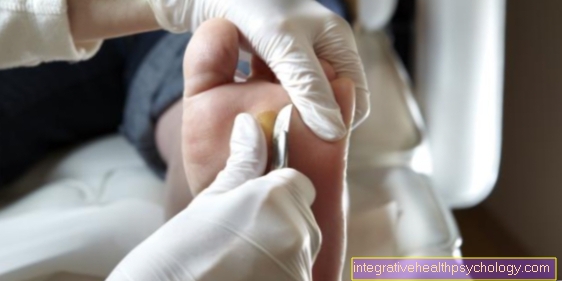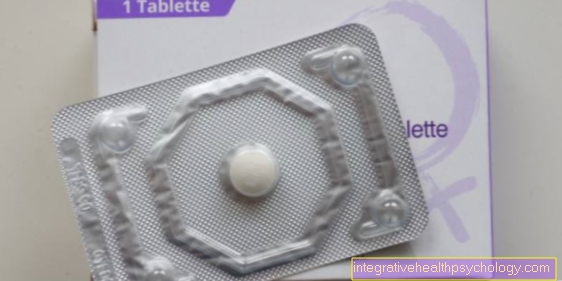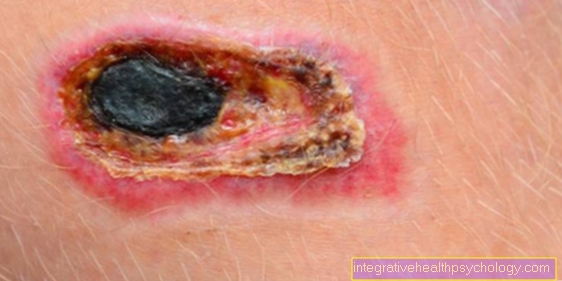Stork bite on baby
definition
The bright red skin mark, known colloquially as a stork bite, occurs in many newborns and is caused by enlarged blood vessels in the skin at this point. It is considered a sub-form of the fire mark (Naevus flammeus). Outwardly, it differs from harmless birthmarks on babies, especially because of its red color.
It is often located in the baby's neck, which is where the name “stork bite” comes from, and can be very variable in size. It looks like the stork was holding the baby at this point with its beak when it supposedly brought it to its parents. Such a skin change can, however, also occur on other parts of the body, for example in the tail area, the face or head area or on the legs of the child.
The stork bite is a harmless phenomenon and usually disappears on its own within the first few years of life. Persistent stork bites can be removed with a laser for cosmetic reasons.

causes
The stork bite is caused by an expansion of the smallest blood vessels in the skin - the capillaries. Due to the red color of the blood that flows through the capillaries, the stork bite appears in its bright red color.
Since the vessels are only enlarged, the stork bite is at the skin level and is not significantly raised.
It is not clear how the local vasodilatation occurs. It may be a specific developmental defect in the maturation of the fetus.
diagnosis
The diagnosis of a stork bite can usually be made through the characteristic clinical appearance the skin change by a pediatrician. The diagnosis is usually already made soon after the birth because the stork bite is already present and is noticed in the hospital when the newborn is examined.
If the doctor presses on the lesion with a transparent glass spatula, the blood can be pushed out of the enlarged skin vessels. The stork bite so fades from local pressure.
Due to this typical appearance and also the general frequency of the stork bite are usually no further investigation necessary to make the final diagnosis. That is particularly the differential diagnosis Hemangioma (also Blood sponge called) into consideration.
It is a benign tumor of the skin vessels that can manifest itself clinically in a similar manner. In contrast to the stork bite, however, this is usually something due to its growth raised above the skin level.
Concomitant symptoms
The stork bite is usually a harmless phenomenon and therefore does not lead to further symptoms. It is characteristic that the stork bite in situations of increased blood circulation - So if the child is excited, for example when screaming - still colors more red.
It is also noticeable that stork bites on certain parts of the body are disproportionately often associated with other malformations. According to the definition, one then no longer speaks of the classic stork bite, but of a fire mark (Naevus flammeus).
Stork bite itches
A stork bite does not usually itchbecause they are just dilated blood vessels in the skin.
However, if the child shows symptoms of itching, the Region examined more closely become. It may not be a stork bite, but something else itchy rash on baby, for example a Eczema in the baby.
Depending on its extent, eczema may at first glance be confused with a large stork bite.
If the supposed stork bite causes itching or another symptom, one should renewed medical evaluation and the diagnosis is checked for correctness.
therapy
Since stork bites are usually harmless and regress on their own, is usually no therapy necessary.
First you will observe the spontaneous course of the skin change. Usually the stain disappears on its own within the first few years of life and in most cases it is Disappeared completely by the age of six.
Sometimes the stork bite can persist and show no spontaneous regression tendency. In such cases a therapeutic removal of the stork bite Considered especially if the skin mark is too Perceived cosmetically as disturbing becomes.
For example, the Desolation of the enlarged vessels by means of Laser therapy. In the case of very large stork bites, however, this procedure may be inadequate and not bring the desired result. If necessary, all that remains is the cosmetic covering of the stork bite with special make-up.
Duration
In most cases, the stork bites form within the first three years of life back spontaneously. The initially bright red skin change increasingly fades.
By the age of six, the stork bite has completely disappeared in most cases.
In rare cases, however, the stork bite shows no signs of regression and persists. In such cases, a doctor can try to remove the skin appearance.
Different locations of the stork bite
Stork bite on the forehead
Stork bites are coming very often in the face area and therefore also on the forehead. As with other localizations of this skin change, the stork bite usually forms on the forehead back on its own within the first few years of life.
Since permanent stork bites in the face area in particular are often called cosmetically disturbing can be felt, if there is no tendency to regression Removal of the stain should be considered.
Read more about this at: Stork bite on the forehead
Stork bite on the eyelid
Stork bites can also occur on the eyelid. In the case of stork bites on the eyelid, it is important to avoid the general fire mark (Naevus flammeus) to delimit. This occurs in some cases in connection with other malformations, especially when localized on the eyelid.
One clinical picture that comes into question here is Sturge-Weber syndrome. In addition to the fire mark in the face area including the eyelids, affected children also show widening of the blood vessels in the choroid membrane of the eye and in the central nervous system.
As a result, they develop seizures and, as a result, often a mental impairment. The seizures must be treated urgently, as the mental development of the child depends on it.
Read more on this topic at: Stork bite on the eye
Stork bite on the nose
Stork bites can also occur in babies on the nose. This localization is true less common than the classic stork bite in the neck, does occur.
Just like on other parts of the body, the stork bite usually forms on the nose within the first years of life back.
Alternatively, if it persists, it can be removed by a doctor for cosmetic reasons.
Stork bite on the back of the head
The is located on the back of the head or in the neck area most common localization of the stork bite.
The skin lesion got its name from this preferred part of the body, as it looks as if the stork grabbed the baby by the neck and brought it to its parents.
The stork bite on the back of the head, like stork bites in other parts of the body, usually disappears within the first few years of life. In addition, the progressive growth of scalp hair increasingly coveredso that it causes fewer cosmetic problems than, for example, stork bites in the face area. Medical removal is therefore much less necessary.
For more information, see: Stork bite in the neck
Stork bite on the back
Stork bites can also be found on the back of newborn children. Especially if the stork bite is accurate in the line of the spine this should be on your correct development examined become.
Skin changes on this line may be possible for one incorrect formation of vertebral arches (e.g. Spina bifida) and / or speak the spinal cord.
The same applies to tufts of hair or birthmarks that are at the level of the spine. However, stork bites on the back are usually just as harmless as stork bites on other parts of the body and usually resolve completely within the first few years of life.
Stork bite on the leg
The child's legs can also be affected by a stork bite. As with supposed stork bites on the eyelid, a must here Fire mark (Naevus flammeus) observed in differential diagnosis become.
If it occurs on one leg, this can affect the so-called Klippel-Trénaunay syndrome Clues. The child also has disturbed venous valves and thereby Varicose veins as well as changes in capillaries and lymphatic vessels.
This can lead to giant growth of the affected extremity. However, there are stork bites on the leg harmless in most cases and, like stork bites on other parts of the body, usually regress completely within the first few years of life.


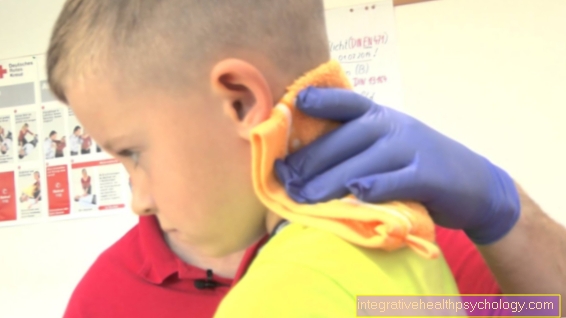
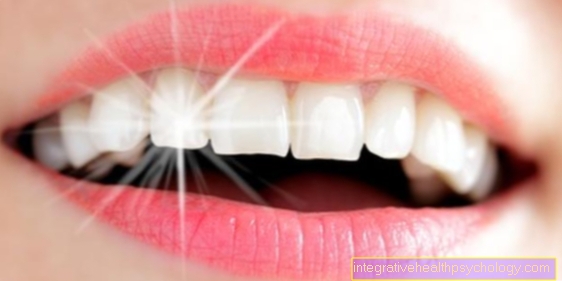

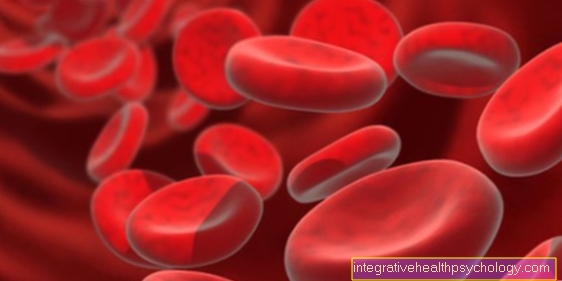



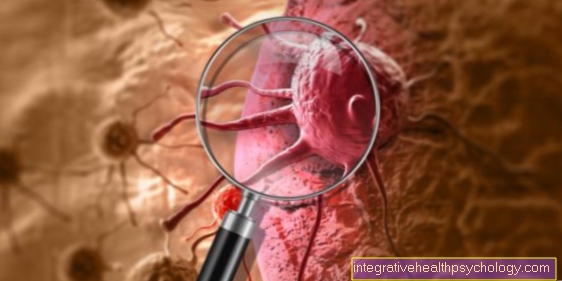



.jpg)








